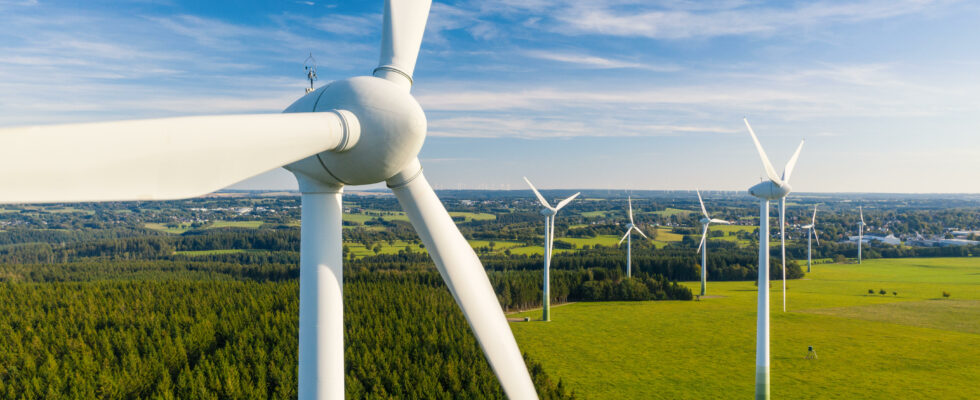The wind blows well on the French wind turbines, but comes up against a wall of paperwork. An obstacle that makes the full exploitation of this source more complicated than it really is.
The geopolitical situation between Ukraine and Russia has quite brutally revealed the limits of dependence on gas, even more so when it comes from companies like Gazprom, Novatek, Lukoil or Rosneft. According to a report from the British thinktank Ember, wind turbines performed very well in 2023, since they became Europe’s second source of energy, overtaking gas power plants.
In this rapidly changing energy landscape, France presents itself at first glance as an example to follow since it is positioned as the third largest European producer of wind energy. However, it struggles to fully exploit this potential, handicapped by restrictive legal procedures.
European expansion and French brakes
Across Europe, the energy transition is accelerating. Carine Sebi, professor holding the Energy for Society chair at the Grenoble School of Management, explains: “ Wind power capacity is being developed throughout Europe “. Result: production on the scale of the Old Continent is equivalent to 475 TWh, which represents an increase of 13% compared to last year. Result: production of gas (-15%) and coal (-26%) is falling.
This transition is driven by three main countries: Germany, Spain and Denmark. Three nations benefiting from legislation conducive to the development of this energy source as well as a fairly robust industrial fabric.
France, despite its rather comfortable position, is still lagging behind in wind power development and Brussels’ objectives still remain out of reach. Renewable energy production stagnates at 19%, far from the expected 23%. Caroline Sebi mainly points the finger at “ cumbersome legal procedures » which significantly slow down building permits. The example of the Saint-Nazaire offshore project and its sluggish implementation which took place over a decade is a glaring example of the administrative difficulties which are holding back the sector.
Towards a reconciliation with wind power?
In France, wind power development began to really accelerate in the early 2000s; However, there remains a form of distrust among us towards this source of energy. Camille Defard, head of the energy center at the Jacques Delors Institute, highlights “ fairly strong opposition at the local level “. Wind turbines are noisy, not really aesthetically pleasing and not efficient enough in the eyes of a certain number of people. Fears exacerbated by the influence of nuclear power on public opinion in France. For Carine Sebi, “ we need to change the narrative associated with wind turbines, educate, encourage and show the benefits “.
According to the two experts, this change of perspective would benefit from being inspired (once again?) by the German model, which tends to promote citizen participation. One of the other levers would be the implementation of compensatory measures. Carine Sebi explains: “ Additional measures could be implemented to create a park, such as replanting trees or renovating collective buildings. “.
These proposals deserve consideration, however, the direct transposition of national models from one country to another sometimes tends to neglect the political, cultural or regulatory specificities of each country. “ Truth below the Pyrenees, error beyond » wrote Pascal. Especially since participatory procedures, as beneficial as they may be, often tend to be long and costly. If they become an additional obstacle, we do not necessarily gain.
Source : 20 minutes

9